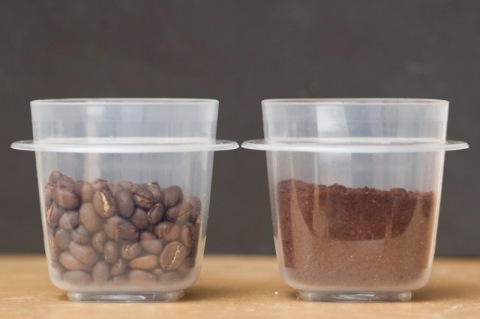If you go to the office store or hardware store and buy a ruler, you might think that you’ve gotten two for the price of one: a length-measuring tool, and a straightedge. Unfortunately, this isn’t always the case. A regular old ruler may or may not be straight. Try this: put the ruler it down on a sheet of paper, mark a line along the edge with a 0.5 mm mechanical pencil, then flip it over and mark another line on top of the previous one. If the lines are directly on top of each other, the edge is straight — at least, it’s straight enough that the error can’t be seen with half-millimeter pencil line. I have at least one ruler where the gap between the lines is over 1 mm.
Nothing is perfectly straight. The only question is how far from straight your straightedge is. For most drawing and measuring applications, if it passes the test above, it’s good enough. But sometimes you need it to be better. In woodworking, the surfaces of some tools need to be very flat — much flatter than 0.5 mm. A hand plane with a sole that’s flat to only 0.5 mm would be worse than useless; it would unpredictable and inconsistent, and would gouge the workpiece horribly. (Unfortunately, inexpensive metal hand planes are all like this out of the box — maybe not as bad as 0.5mm, but bad enough that they really can only be used to damage wood. Seriously. This is not an exaggeration.) I don’t know exactly how flat the sole of a hand plane needs to be, but it certainly needs to be better than 0.5 mm, or even 0.1 mm.
I was considering buying a good straightedge, but before I actually did it, I saw in Toshio Odate’s book Japanese Woodworking Tools a method for making a straightedge. The purpose of the straightedge in his book is specifically for checking the sole of a plane, but it could be used for any purpose.
To make it: the short version of the story is that you take two pieces of wood, put next to each other and plane them, then “unfold” the two objects so that the planed edges are facing each other, then check for light between them. If there’s light, you shave away the high spots and check again. The are two reasons why you make a pair of objects: first, you don’t need a good reference straightedge to check to see if your new straightedge is actually straight, and second, any deviation will be doubled, making it possible to see errors that are half the size of what you would be able to see even if you had a perfect straightedge to compare it to. This paired-planing method is, in theory, twice as accurate as making a single object and comparing to perfect straightedge.

Planing the two parts of the straightedge. There are two thin pieces of wood, clamped together so they don't fall over.

Checking for straightness. The pieces are "unfolded" so that the planed sides are facing each other. In this photo, the ends here are bowed apart, indicating that I put too much pressure at the end of the planing stroke. I eventually got it much better, but not perfect.
Read the rest of this entry »








